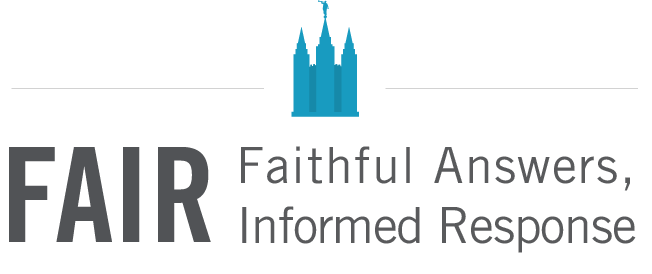
FAIR is a non-profit organization dedicated to providing well-documented answers to criticisms of the doctrine, practice, and history of The Church of Jesus Christ of Latter-day Saints.
Home > Book of Abraham Sandbox > Introduction to Book of Abraham Documents > General Overview of Book of Abraham Documents
Summary: This page gives a general overview of documents related to the Book of Abraham as well as links to other resources for further learning. This page will only describe those documents that FAIR editors believe are most important for resolving apologetic issues related to the Book of Abraham.
We will start with three of the eleven fragments of papyri currently in possession of The Church of Jesus Christ of Latter-day Saints.
| Related article: | Provenance of the Book of Abraham Papyri Summary: See here for discussion of the origins of the 11 fragments of Egyptian papyri once belonging to Joseph Smith that are now in the possession of The Church of Jesus Christ of Latter-day Saints. |
Three of these fragments, designated JSP I, X, and XI, comprise what is known as either a "Book of Breathings," "Breathing Permit," or "Sensen Text." "Sensen" just means "breathings" in Egyptian. Thirty-two copies of The Book of Breathings survive today. It is a document that is known to have "belonged almost exclusively to members of families of the priesthood of Amun-Re at the Karnak Temple in Thebes, 'which suggests the text might be particularly associated with that office.'"[1] The purpose of the Permit "was to provide the deceased with the essential information needed to be resurrected from the dead and attain eternal life with the gods in the hereafter.”[2]
Critics believe that Joseph Smith derived the entirety of the current text of the Book of Abraham from JSP XI. On another page, we have refuted that argument.
| Related article: | The Book of Abraham and Joseph Smith Papyri XI Summary: See here for discussion of the argument that Joseph Smith derived the current text of the Book of Abraham from JSP XI. |
To get more familiar with these papyri, see the Joseph Smith Papers website.
Facsimile 2 is a copy of a papyrus that contains what is known as a hypocephalus. Hypocephali are so-named because they were placed under (hypo) the head (cephalus) of many of the Egyptians dead.
The hypocephalus that fell into the hands of Joseph Smith belonged to an individual named Sheshonq. The original facsimile can be seen here.
The "early" Book of Abraham manuscripts are so-called because they were likely created in 1835. Joseph Smith is known to have at been engaged in at least a revision of his Book of Abraham materials prior to publishing the Book of Abraham in the Church's newspaper, the Times and Seasons, in 1842. The early manuscripts contain the text of at least the first two chapters of the Book of Abraham and have hieratic characters lined up in the left margin of the pages.
The so-called "Kirtland Egyptian Papers" comprise a group of documents that represent early attempts by Joseph Smith and his associates to decipher hidden meanings in the Egyptian papyri they had acquired. The name "Kirtland Egyptian Papers" came from scholar Hugh Nibley. Nibley's nomenclature has been gradually replaced by scholars who prefer to call the documents the "Egyptian Language Documents" to better reflect the fact that the creation dates of some of these documents are unknown.
These documents are as follows:
There are other manuscripts of the Book of Abraham that date to February–March 1842. They include Abraham 1:1–2:18 and Abraham 3:18–26. They also include an explanation of Facsimile 2.
As mentioned, Joseph Smith published the Book of Abraham serially in the Times and Seasons in 1842. The Times and Seasons publications can be viewed here.
There are several eyewitness statements about the Book of Abraham and its production that FAIR's pages on the Book of Abraham will mention and discuss. It may be worthwhile to be familiar with these sources. We have compiled a list of statements that can be found here.

FAIR is a non-profit organization dedicated to providing well-documented answers to criticisms of the doctrine, practice, and history of The Church of Jesus Christ of Latter-day Saints.
We are a volunteer organization. We invite you to give back.
Donate Now